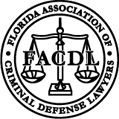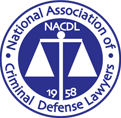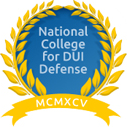- DUI
- Criminal Defense
- Florida DUI
- Traffic Offenses
- Drug Charges
- Marijuana Charges
- Violent Crimes
- Domestic Violence
- Temporary Injunctions
- Weapons Charges
- Theft Crimes
- White Collar Crime
- Juvenile Offenses
- Sex Crimes
- Violation of Probation
- Early Termination of Probation
- Seal or Expunge Criminal Record
- Criminal Appeals
- US Federal Offenses
- Misdemeanor Charges
- Felony Charges
- Co-Defendant Cases
- College Student Defense
- College Student Hearings
- FSU Students
- FAMU Students
- Florida Panhandle Arrests
- Extradition to Florida
- Bench Warrants / Warrants
- Emergency Bond Hearings
- Gambling Charges
- Drone Arrests
- Marsy’s Law
- UAS Infractions
- Introduction of Contraband
- Lying to Police
- Locations
- Case Results
- Our Firm
- Media
- Resources
- Blog
- Contact Us
Child Pornography Laws in Florida: A Florida Criminal Defense Trial Expert’s Perspective
June 29, 2024 Don Pumphrey, Jr. Criminal Defense, Sex Crimes Social Share
What to Know About Florida’s Evolving Laws on Child Porn, Child Pornography, Child Sexual Abuse Material or “CSAM”, Deepfakes and More
Florida’s Child Pornography Laws
Florida’s child pornography laws are harsh and scary – even for the law-abiding citizen. You would expect someone who knowingly and intentionally possesses child pornography to know child pornography laws in Florida are harsh and scary – that can be understood. But what about law-abiding citizens who may unintentionally and unknowingly have such materials on their device, whether this comes through an unsolicited email or a result on a benign web search?
Under Florida Statutes Section 827.071, child pornography in Florida is defined as any image depicting a minor engaged in sexual conduct, or any image created, altered, adapted, or modified by electronic, mechanical, or other means, to portray an identifiable minor engaged in sexual conduct. Anyone found to be in possession of these materials can be charged under the statute.
In thinking about this blog article, and how to help others understand the dangers of the Florida child pornography laws, one first has to start with the question – where is child pornography? The answer is quite simple: on the web, and not just the dark web. The same web you connect to to get your favorite streaming service. The one you are connected to on your WiFi at home – in the office, at the airport, through a patch cable (for those that know what a patch cable is).
Nothing connected to the web is not secure. Nothing. If you purchase a new “Smart TV” to access your favorite streaming service or services, look in the owner’s manual where it says that nothing connected to the Internet is secure.
Do you know everything sent to you or that is on your device or devices currently? We receive unwanted solicitations constantly for products or services. Where in Florida Statutes Section 827.071 is there a “safe harbor” for those who find these unsolicited materials? What are they to do? Take it to law enforcement? Section 827.071 is a possession statute – when you take it to law enforcement, you have the material in your possession and know it is illegal. Right now, that is a violation of Florida’s child pornography laws.
The Florida Legislature needs to fix this – and fix it yesterday. This is bad for all people who want to fight the scourge of child pornography – all law-abiding citizens. It diverts valuable resources that could otherwise be focused on holding the bad guys involved in this criminal industry accountable.
You may ask, why would someone I don’t know or have never met send me something I don’t want, like child sexual abuse material (CSAM) – which is the law enforcement term for child pornography? The answer is simple – they are sick and are trying to groom others en masse. They are looking for opportunities to groom others and grow their network of twisted, unlawful sexual deviancy. And that assumes that it’s not a machine, malware, web bot, spiders, or artificial intelligence (AI) responsible for the material ending up on your device.
Is the next option really to just delete it? First and foremost, nothing is ever deleted. That’s before we even get into felony destruction of evidence or obstruction. Harsh and scary does not even begin to describe the current state of Florida’s child pornography laws. So, if you are an unfortunate person caught in a web involving CSAM in violation of Florida’s child pornography laws, what do you do? What are you to do if it is unwanted and unsolicited?
The Internet is everywhere. Even scarier, those responsible for the majority of CSAM are not even in the United States and not in Florida – they are mostly in places the United States does not have jurisdiction. Any platform where files can be sent between people, whether solicited or unsolicited, can transfer a file containing CSAM. The unsolicited and unwanted file or files can be sent to a user connected to the Internet. That person could then unknowingly have CSAM on their computer, tablet, cell phone or any other device accepting emails, messages or transfer of information through a platform.
An organization called the National Center for Missing and Exploited Children (NCMEC) tracks CSAM (child pornography) as it transfers across the web. NCMEC uses a variety of “tools” to track CSAM online, including “hash matching” – which is Google’s Hash Matching Application Programming Interface (API) – to compare strings of characters, or hashes, extracted from media files to a database of known CSAM. This helps NCMEC prioritize reports, identify new images, and reduce the need for staff to review the same images repeatedly. The “issues” NCMEC has listed on their website relating to CSAM include, but are not limited to: end-to-end encryption, online enticement, and sextortion.
Florida law punishes child pornography offenses very harshly. Child pornography is illegal under Florida law, including AI-generated “deepfake” child pornography.
Child pornography in Florida is defined as any image depicting a minor engaged in sexual conduct, or any image that has been created, altered, adapted, or modified by electronic, mechanical, or other means, to portray an identifiable minor engaged in sexual conduct.
Possession of Child Pornography Laws
Under Florida Statutes Section 827.071, possession of child pornography is criminalized in Florida. If someone:
- Knowingly possessed, knowingly controlled, or intentionally viewed an image such as a photograph, movie, or other presentation;
- The image included, in whole or in part, child pornography;
- They knew that the image included child pornography
They can be convicted of possession of child pornography. A standard charge for possession of child pornography is a third-degree felony in Florida for each image. This carries up to five years in prison and a $5,000 fine.
A person can be charged with Aggravated Possession of Child Pornography if they are found with ten or more pieces of content which are considered to be child pornography where at least one of the images contains the following:
- A minor who is younger than 5;
- Sexual battery involving a child;
- Sexual bestiality involving a child;
- Sadomasochistic abuse involving a child; or
- A movie which displays a child, regardless of the length or inclusion of sound.
Aggravated Possession of Child Pornography is considered a second-degree felony in Florida. Penalties include up to a $10,000 fine and up to 15 years in prison.
The issue of AI deepfakes has also attracted media coverage, with a recent episode of the New York Times podcast “The Daily” mentioning the arrest of two Miami middle school boys who used deepfake AI technology to create nude images of their female peers.
As of 2022, child pornography in Florida now includes any images that have been created, altered, adapted, or modified by electronic, mechanical, or other means, to portray an identifiable minor engaged in sexual conduct. These are subject to the same penalties as non-AI child pornography. Florida Statutes Section 827.071 reads:
“It is unlawful for any person to knowingly possess, control, or intentionally view a photograph, motion picture, exhibition, show, representation, image, data, computer depiction, or other presentation which, in whole or in part, he or she knows to include child pornography. The possession, control, or intentional viewing of each such photograph, motion picture, exhibition, show, image, data, computer depiction, representation, or presentation is a separate offense.”
“If such photograph, motion picture, exhibition, show, representation, image, data, computer depiction, or other presentation includes child pornography depicting more than one child, then each such child in each such photograph, motion picture, exhibition, show, representation, image, data, computer depiction, or other presentation that is knowingly possessed, controlled, or intentionally viewed is a separate offense.” Florida Statutes Section 827.071
What Do Florida Courts Say About Child Pornography?
Various cases regarding child pornography have been heard in Florida courts. Notably, Florida courts have ruled that imposing punishments up to and including life in prison for possessing many exhibits of child pornography is permitted. This is because child pornography sentences run consecutively, not concurrently. Thus, if someone is convicted of 30 counts of third-degree possession of child pornography, they could face up to 150 years in prison.
Such a case was Stephens v. State, 305 So.3d 687 (Fla 3rd DCA 2020). In Stephens, the defendant challenged his sentence of 150 years in prison for 30 counts of third-degree felony child pornography possession in violation of Section 827.071. The court upheld his sentence despite allegations that it was “cruel and unusual” in violation of the Eighth Amendment, stating that the government had a legitimate public interest in deterring child pornography offenses.
“Given the compelling State interest both in eliminating the possession of child pornography and protecting the victims of child pornography … as well as the Legislature’s prerogative in setting the length of the sentence for possession of child pornography, we conclude that Stephens has failed to establish that his sentence, while admittedly quite harsh, is grossly disproportionate to the offense.” Stephens v. State, 305 So.3d at 695.
But given that child pornography requires a child – whether this material is real or AI-generated – to be engaged in sexual conduct under Florida Statutes Section 827.071, courts have found in favor of defendants charged with child pornography when there was insufficient evidence that the images or videos they possessed involved children engaged in sexual activity.
In Fletcher v. State, 787 So.2d 232 (Fla. 2nd DCA 2001), the defendant had positioned a hidden camera pointed to his 12-year-old daughter’s bathroom to capture her undressing, bathing, and using the toilet in the bathroom, allegedly to share this material online with viewers of child pornography. The defendant was ultimately acquitted on the child pornography charges, as the court found that capturing images of a nude child not engaged in sexual activity did not violate Florida Statutes Section 827.071. Thus, police did not have probable cause to arrest him.
“The warrant in this case merely alleged that hidden cameras were situated in a bedroom and bathroom in Fletcher’s home. However, the affidavit contained no facts to establish that these cameras could have captured anything more than innocent conduct such as children using the toilet, dressing and bathing. The presence of cameras which can only record such conduct does not establish probable cause to suspect possession of child pornography.” Fletcher v. State, 787 So.2d 232 (Fla. 2nd DCA 2001).
Moreover, Florida courts have found that pasting a child’s head onto an image of a nude adult body, which was engaged in sexual activity, did not constitute child pornography under Florida Statutes Section 827.071. Parker v. State, 81 So.3d 451 (Fla. 2nd DCA 2011). The defendant was acquitted after he was found to have cut and glued a child’s head from an image onto an image of a nude adult body engaged in sexual conduct. The court found this was insufficient to constitute child pornography.
“It bears repeating that a person is guilty of possessing child pornography if he ‘knowingly possess[es] a photograph, … representation, or other presentation which, in whole or in part, he or she knows to include any sexual conduct by a child.’ § 827.071(5) (emphasis added). No matter how one parses the words, section 827.071 requires that the depicted sexual conduct be that of a child. The three photographs fail that test.” Parker v. State, 81 So.3d 451 (Fla. 2nd DCA 2011)
However, this doctrine may evolve with the advent of AI-generated child pornographic material. As we’ve entered an era in which faces of children can be used to generate images whole cloth on computers, Florida law has responded by prohibiting AI-generated child pornography. This is defined as AI-generated images – also known as “deepfakes” – in which a real child’s head is superimposed on a computer-generated depiction of child pornography. Whether this law will eventually extend to a real child’s head being imposed on adult computer-generated pornography is unclear.
What is clear is that the law against AI-generated child pornography in Florida is being enforced. In April 2024, a 51-year-old man was arrested in Martin County, Florida after police discovered he had allegedly used artificial intelligence “deepfake” technology to produce child pornography from an ordinary image of a 5-year-old. Additionally, two middle school boys in South Florida were charged recently after allegedly producing AI-generated child pornography using images of their classmates.
Being accused of violating Florida Statutes Section 827.071 is scary – and can have lifelong consequences such as years of prison time and hefty fines. Don Pumphrey, Jr. is an experienced and aggressive Tallahassee criminal defense attorney with almost 25 years of experience fighting tirelessly for clients in Florida. (850) 681-7777
Former Prosecutor, Former State Police Officer, Lifetime Member of the Florida Association of Criminal Defense Lawyers; for almost 25 years as a private defense attorney who is Trusted, Experienced, Aggressive in Criminal Defense as a Trial Attorney, Criminal Lawyer, Criminal Defense Lawyer for the accused in Florida State Courts located in Tallahassee, Florida but handling cases throughout the State of Florida.
Don Pumphrey, Jr. has been qualified, accepted as an expert, and testified as an expert in the area of Criminal Defense Trial Work in Florida (State v. David Lee Green, Case No: 00-CF-016798, Hillsborough County, January 5th, 2011, Tampa, Florida; Honorable Susan Lee Sexton, Circuit Judge).
Find a Criminal Defense Lawyer in Tallahassee, FL
As a former prosecutor, former state police officer and a life member of the Florida Association of Criminal Defense Lawyers, Don Pumphrey Jr. has observed that being arrested anywhere in Florida can be extremely stressful. Being charged and “formally charged” by information in Tallahassee or Leon County, Wakulla County, Jefferson County, Gadsden County, Quincy, Crawfordville, Florida State University, Florida State University Campus, Florida State University Student Code of Conduct, Tallahassee Community College, Florida A&M University, or facing first appearance in Leon County, can be life changing. Given the possibility of a lengthy jail or in some cases lengthy prison sentence and hefty financial penalties, it is important to contact an aggressive, trusted and experienced Tallahassee criminal defense attorney as soon as possible.
Don Pumphrey, Jr. and the attorneys at Pumphrey Law have decades of experience fighting on behalf of clients and winning. Call Pumphrey Law now at (850) 681-7777 to learn more about what we can do for you. Our lawyers will be happy to provide you with a free consultation.











